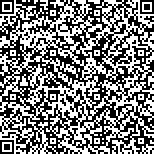下载中心
优秀审稿专家
优秀论文
相关链接
摘要

大数据技术中的一个难点是如何统筹多源异构的数据。在多源数据协同定量遥感产品生产系统中,不同传感器数据的协同使用为生产系统的各个环节都带来了许多的问题,例如异构数据文件的统一表示和调度,繁杂生产流程的统一抽象等。领域驱动设计是一种应对软件核心复杂性的设计方式。领域驱动是指在设计过程中经过不断的迭代,逐渐提炼出一套灵活优雅的领域模型。领域模型专注于分析问题领域本身,发掘重要的业务领域概念,并建立业务领域概念之间的关系。本文在不断实践的基础上提出了一组较成熟的领域模型,该模型用一种统一的方式解决了多源数据协同生产系统中各方面的问题,并显著地降低了系统集成的难度和工作量,且为新数据源的加入预留了灵活性。
Currently existing quantitative remote sensing products are mainly based on source data from the same sensor. However, the use of a single data source limits the space-time continuity and accuracy of these products. In recent years, more sensors have become available, and an increasing demand to employ multisource data emerges to generate quantitative remote sensing products. We build a multisource data synergized production system to materialize this idea. However, data from different sensors are quite heterogeneous in many aspects, such as file naming rule, data format, number of files, geometric positioning, and band setting. The heterogeneity of multisource data has many challenges in almost all parts of the production system in the process of system development and further extension. Developers have implemented and exhausted diverse logics to tackle the difference among multisource data. Therefore, we propose a set of domain models for the data from different sensors to share the same behavior when addressing, moving, and dispatching. The domain model should be sufficiently flexible to adapt new data in arbitrary form when new products are integrated in the future. Based on the unified behavior of data, all related functions in the system are also unified and can be freely used regardless of the data type. Domain-driven design is a software design philosophy that tackles core complexity in the heart of software by iteratively refining a set of core domain models. A refined domain model is valuable because of its high reusability. Domain models can ensure that all business logics have unified interfaces throughout a large system. We propose a set of domain models for each business scenarios in our system, such as data hierarchy, filename parsing, repository pattern, script building, order configuration, and job running. Based on the proposed domain model, we have built a comprehensive multisource data synergized quantitative remote sensing production system. The system is order-driven and can automatically produce the required products. Cascade production is also supported, which means that, if a high-level product requires nonexistent low-level products, then these low-level products will be spontaneously produced. The function modules include data import, order management, data search, and production. The system supports approximately 30 types of source data from almost all commonly used sensors and more than 40 types of quantitative remote sensing products. Thousands of products have been generated, and the system performs well. During system development, the number of code lines and function points are significantly reduced by using the proposed domain model. During system extension, the domain model adapts well and is completely compatible with all new types of data and products without exception and modification. The proposed domain model has shown its generality to generate multisource data with unified behavior and flexibility to adapt new data and products. The model can significantly reduce the number of code lines and function points. Thus, system development and extension have become easier and more effective. The domain model can also be referenced by other data synergized production systems. In the future, we will attempt to refine the domain model to make it more versatile and flexible.

